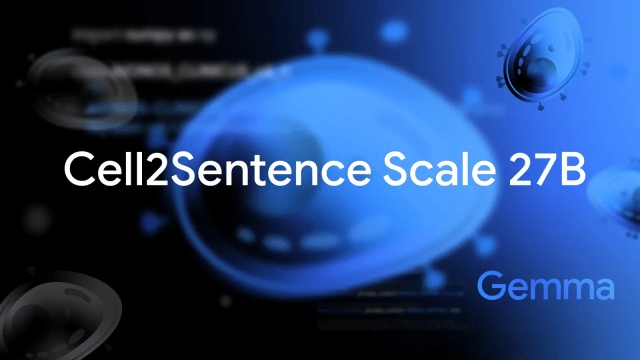Google DeepMind’s new AI model just cracked a major cancer mystery
Google DeepMind and Yale University have created an AI model called C2S-Scale 27B that helped scientists identify cancer cells and opened the door for new form of therapies.
 Google says its AI model could open new cancer drug pathways. (Image Source: Google)
Google says its AI model could open new cancer drug pathways. (Image Source: Google)Google’s DeepMind division has released a new AI model that has just made a major breakthrough in cancer research. Developed in collaboration with Yale University, the new 27 billion parameter foundation model named C2S-Scale 27B is built on Gemma open models and is “designed to understand the language of individual cells.”
In a blog post, Google said that the announcement marks a milestone for AI in science as it “generated a novel in hypothesis about cancer cellular behaviour, which scientists experimentally validated in living cells.”
In other words, Google’s AI model was able to predict new drugs which could help fight tumours by understanding how cancer behaves at the cellular level and interacts with the immune system. This was then successfully tested by scientists on human cells and might help us find new pathways for developing future cancer therapies.
Google says that its discovery is built on its earlier research, which helped scientists understand how large AI models have higher levels of conditional reasoning.
An exciting milestone for AI in science: Our C2S-Scale 27B foundation model, built with @Yale and based on Gemma, generated a novel hypothesis about cancer cellular behavior, which scientists experimentally validated in living cells.
With more preclinical and clinical tests,…
— Sundar Pichai (@sundarpichai) October 15, 2025
How does C2S-Scale 27B work?
Google says that one of the major challenges in cancer immunotherapy is that cancerous tumours are usually invisible to the body’s immune system. However, one of the strategies to make them visible is by forcing them to display what are called “immune triggering signals” using a process called antigen presentation.
For this, Google’s AI model was given the task to find a drug that acts as a conditional amplifier, which helps immune cells in the body to recognise cancerous cells under specific conditions.
To do so, C2S-Scale 27B used what researchers label as a “dual context virtual screen”, a process that involves analysing more than 4,000 drugs across various tumour samples and isolated cell data. The tech giant says that the large-scale simulation allowed the AI model to identify compounds that would enhance immune activation in certain situations.
While some of the drugs used in the test were already known to work on cancer cells, the AI model did find some new ones that had no previous connection to cancer immunotherapy.
These findings were then taken to the lab bench and tested on human neuroendocrine cell models, a cell type that wasn’t involved in the model’s training. One of these drugs was the CX-4945, which the model predicted would dramatically increase (around 50 per cent) the antigen presentation.
The discovery also suggests that the AI model did not just process biological data, but also reasoned and discovered how cellular conditions could affect the success of a particular treatment. When it comes to cancer research, Google’s AI model shows how we can use technology to shift from trial and error approach to testing drugs in a virtual laboratory.







